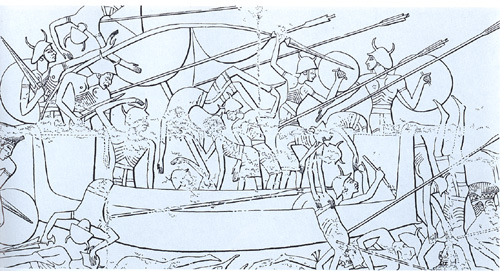Today I want to continue the exploration of historical narrative with a scattering of ways in which a common speech is used differently by different speakers, depending on their background and upbringing. We all trail personal history into our conversation, in ways which can be very illuminating.

The phenomenon can be easily heard in modern English. Regional differences within the United Kingdom and other countries whose major language is English provide a rich source of examples, but real diversity appears where English is a widespread second language. Chinglish and Hinglish, living creations of Chinese (Mandarin) and Hindi speakers, are vibrant and fascinating arrivals on the world stage. They are not random free-for-all inventions: they follow a set of grammatical and structural patterns derived from a fusion of both sources. The flow goes both ways as English absorbs habits of speech from elsewhere. “Long time no see” is pure Mandarin, converted word for word into English and now completely understood.
An eye opener for me, brought up in the south of England, was hearing how people from the north of the country spoke. I don’t mean different vocalisation of vowel sounds, like saying cassle instead of carsel for castle, but something more deeply built in to the thought process.
For example, one thing which struck me early on was the regular use of similes in everyday speech – “as hard as bell metal” was one that I heard pretty much at first exposure. But the more I listened, the more I heard this regular, unconscious use of simile to enrich dialogue, in ways which (at the time, at least) were not common down south. Now, rather later on I learned all about the historical division of the country between Dane and Saxon, and the various ways this is found in placenames and the like. But this early recognition that the differences showed up not just in atomic fragments of words, but in a whole way of imagining the world, has stayed with me.
Another regional difference which some readers will recognise appears in how we verbally contract a negation. In some parts of England we say “they won’t” whereas in other parts we say “they’ll not“. Both are valid, there is no difficulty in understanding each of them, and I cannot see any real difference in meaning of emphasis between the two: they simply reflect preference and habit.
Coined words are another good example. You can have a word which obeys perfectly logical patterns in English, but simply (for whatever reason) did not exist. When I was young the word “somewhen” as a parallel to “somewhere” did not exist, but sometime between then and now it has entered common circulation – it is even accepted by the spell check as I write this! Recently I heard “everywhen” being used – again a logical parallel to “everywhere” but not yet in use (and not recognised by my spellcheck). Asimov coined words like this in a few places, including in “The End of Eternity” where the technicians used the words “upwhen” and “downwhen” to describe temporal direction.
Now sometimes such words are a logical deduction from pre-existing ones, as above, but other times they are a direct carry-over from a real word in a person’s mother tongue into a presumed one in a target language. German is particularly good at simply coining new words by adding together existing ones in order to establish a specific shade of meaning. So a speaker of a second language may simply assume that a parallel exists to one in his or her native language, and coin the word fresh.
So all these ideas – and more – suggest ways to indicate conversational difference between speakers sharing language. More to follow next time, looking at use of verbs and word order…








